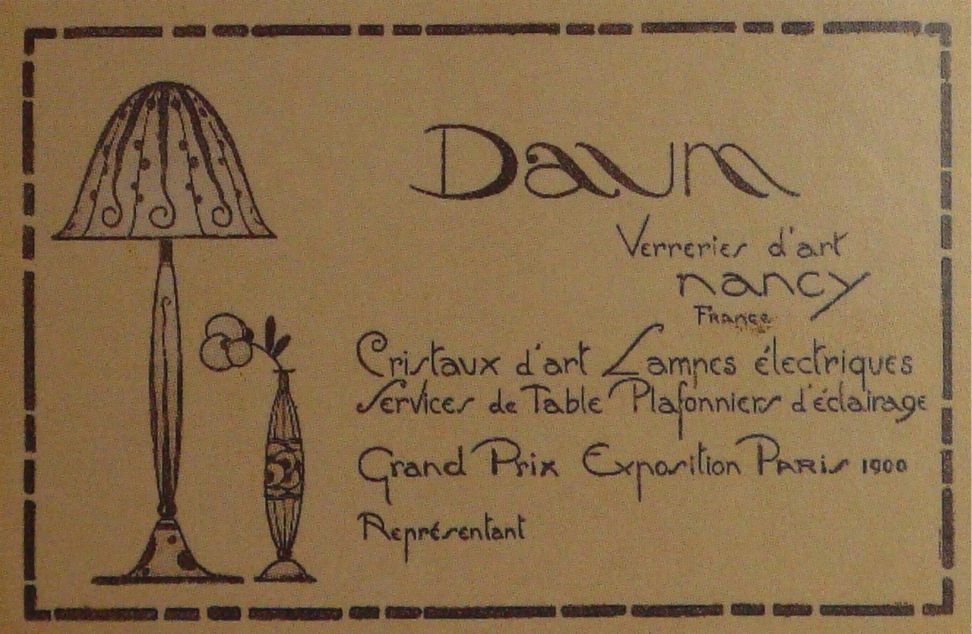A Wrought-Iron and Etched Glass Table Lamp
By Katona and Daum, circa 1925
The shade with wheel-carved signature DAUM NANCY FRANCE with the Cross of Lorraine, the base stamped KATONA
24 in (70 cm) high
15 in (38.1 cm) diameter of shade
At the end of World War I, Daum Frères reopened and set about recapturing its lost momentum. Under the directorship of Antonin Daum, some of the firm’s light fittings – bowls and shades – were sent to Edgar Brandt to be fitted with metal mounts. It was also at this time that the collaboration between the Daum studios and the Majorelle works (also in Nancy) was reinstituted. Metal mounts were wrought by Majorelle and delivered to Daum where glass was blown into them, giving the resulting shades or vases an ‘imprisoned’ appearance. The majority of the great 1900 glassworks did not survive the economic difficulties of the immediate post-war years, but Antonin Daum managed to do so largely by overseeing the production of pieces which, while still reflecting the style of the Art Nouveau era, were nevertheless evolving towards the newly emerging 1920s taste.
In 1925 Daum formed a limited partnership with his two nephews, Paul and Henri, and his son-in-law, Pierre Froissart, as fellow directors. Having survived the war, the firm then faced the Depression of 1929, which further threatened the firm’s existence. Many industries were affected, but French glassmakers suffered particularly with three of Daum’s competitors in Nancy closing down: the Delatte and Duquesne works and the Society of Cristalleries.
Daum produced lampshades for both chandeliers and table lamps in the 1920s, employing techniques and designs that increasingly diverged from their 1900 antecedents. Simple forms – sometimes geometric, sometimes stylised flower motifs – replaced Art Nouveau flora and insects. Opalescence was replaced by clarity, with efforts made to conserve the material’s transparency.
The firm exhibited infrequently at the Paris Salons. In 1921, 1926, and 1932, however, they were represented at the Salon d’Automne.
















